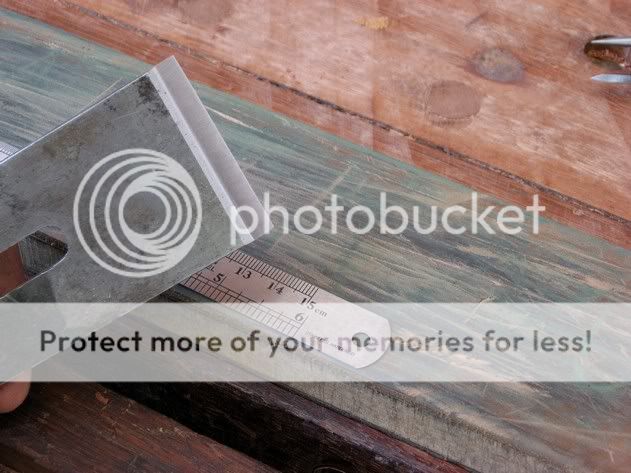Last weekend I finally got time to break in (play with) the Clifton 4-1/2 that my wife gave me for my birthday last month. My intention for this plane was to tune it as a 'super-smoother' to take over from my old Norris A5 as my first choice for tricky grain and very hard timber.
In answer to Karl's original question about angles, I used a 28 degree final angle on the primary side and a 10 degree back bevel, giving 38 degrees at the pointy end and an effective pitch of 55 degrees (cabinet pitch). As far as I understand it, the angle at which the two surfaces meet does have a bearing on how sharp the edge can be, but how smooth you get them is equally, if not more important. I would suggest that 60 degrees is going to make a No. 7 a real bear to push for surfacing work, have you tried taking thinner shavings at 50 or 55 before going up as far as 60?
Using my honing guide on the benchtop, with the blade resting on the lapping plate gave approximately the right angle for the back bevel and is easily repeatable without the need for measuring anything other than the projection in the honing guide. Working down through 60, 30 and 5 micron film soon brings the back bevel to a useable finish.
Turning the blade over, I honed a 3 degree micro bevel on the tip of the primary bevel, again working down through the grades. One more pull stroke on back bevel, using the 5 micron film removed any trace of a burr and left me with a nice sharp cutting edge.
The final step was to polish the first ¼” or so of the back of the blade to ensure a perfect seal against the leading edge of the chipbreaker so that shavings cannot force their way up between the two and cause a blockage. In order to save myself any unnecessary labour I slipped a piece of card under the other end of the blade to ensure that I was only polishing the last few millimetres (an adaptation of one of David Charlesworth’s ideas).
Although Clifton chipbreakers are sharpened at the factory, I like to polish the underside of the chipbreaker and lever cap to ensure a really perfect seal. The standard of polish on the top of both the chipbreaker and lever cap was already excellent - so no extra work needed there.
With the plane reassembled, I set the mouth to a little under 1/32” ready for my first test; a small board of English Walnut.
The plane was a fraction harder to push than usual, requiring a slightly more purposeful stroke, although this could probably be improved with a touch of wax on the sole. The finish on the timber however, was superb. After a few strokes going with the grain I turned the board around and planed it against the grain with no discernible difference in performance or finish. As you can see from the photograph below, the surface is as good as you would normally expect to achieve planing the board the right way around.
I was looking around the workshop for something a little more difficult, when a piece of loft matured Oak Burr scowled at me from the offcuts bin.
Having only ever successfully planed this kind of timber with an infill plane before, there was some trepidation as I butted it up against the planing stop on the bench. You can imagine my relief as the first smooth shaving flowed from the mouth. That tiny little back bevel on the very tip of the blade and the fine mouth setting had made all the difference in the world!
Good luck with the oak Karl, let us know how you get on.















































